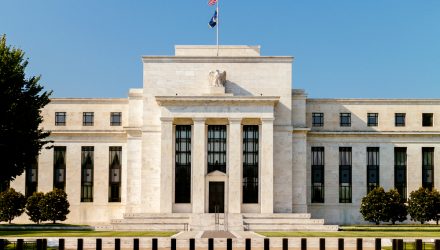In a recently published piece on Sprott Insights, Sprott market strategist Paul Wong made the case that gold is poised to climb out of its yearly hole as the Fed grapples with inflation.
Wong notes that gold suffered from a positioning cleanse in late September that sent the entire precious metals complex into a state of being oversold. Wong’s report said, “the liquidation of gold positions continued but slowed in October, and gold’s positive divergent price action is a sign of selling exhaustion.”
Wong also noted that the market is pricing in policy mistakes that may not materialize, and that the Fed is likely to err on the side of growth with some inflation rather than overcorrect for low inflation and risk a recession.

Fourth Quarter Challenges Await
The fourth quarter presents a myriad of challenges that jeopardize the global economy. As a safe haven asset, gold can be the best protection against economic calamity. The COVID-19 pandemic continues, and though current fiscal impulses have pivoted away from stimulus, it isn’t hard to imagine a scenario where policymakers could reverse course.
Supply chain woes are also prevalent, as are shortages of both labor and raw materials. Wong noted that “Topping these headwinds, however, are the numerous challenges facing China and the burgeoning global energy crisis; we see these challenges as having the most significant potential for tail-type risks.”
China is the fastest growing major economy of the past two decades, but slowdown is inevitable, and the more the global economy is tethered to China, the more impact that slowdown is going to have. “China’s current regulatory tightening cycle is beyond anything seen in the past in its breadth, severity and duration. The crackdown in the property market continues to slow growth and raise the potential for systemic risks,” Wong said.
Hanging over all of this is a profound energy crisis already underway. Wong believes that the biggest component of a stagflation threat is surging energy prices. They add inflationary pressure while simultaneously dragging productivity and growth.
The Fed’s Quandary
Wong sees inflation indicators as inconsistent with the Fed’s stated “transitory” outlook. The risks of lingering inflation and stagflation are evident, and Wong sees the Fed as having to make a tough decision: “does the Fed a) remain ultra-accommodative and risk that prices spiral higher, or b) tighten to preempt inflationary pressures and exacerbate the slowdown?”
If the Fed stays accommodative, the market is likely to move to inflation protection assets, and bond yields will rise, pressuring valuations. In theory, this could lead to growth recovering, but the evidence from bond yield curves indicates that conditions won’t stabilize with this tactic. The second option, aggressive tightening, has the potential to exacerbate the current slowdown and increase market volatility.
Where Does This Leave Gold?
Wong’s report said, “when the Fed’s taper announcement finally arrives, it may turn out to be a ‘buy on the news’ event for gold. While the bond market is experiencing a violent re-pricing in the short end due to uncertainty around taper/tightening, precious metals have already priced in taper/tightening.” Wong sees a potential upside prize squeeze for gold. Silver is also poised to break out.
Regardless of what the Fed chooses to do, gold is likely to have a positive reaction. High inflation will more immediately drive up the price, but if the Fed errs too hawkishly and causes a slowdown, the precious metal space is well poised to fulfill its traditional role as a safe haven.
For more news, information, and strategy, visit the Gold & Silver Investing Channel.








